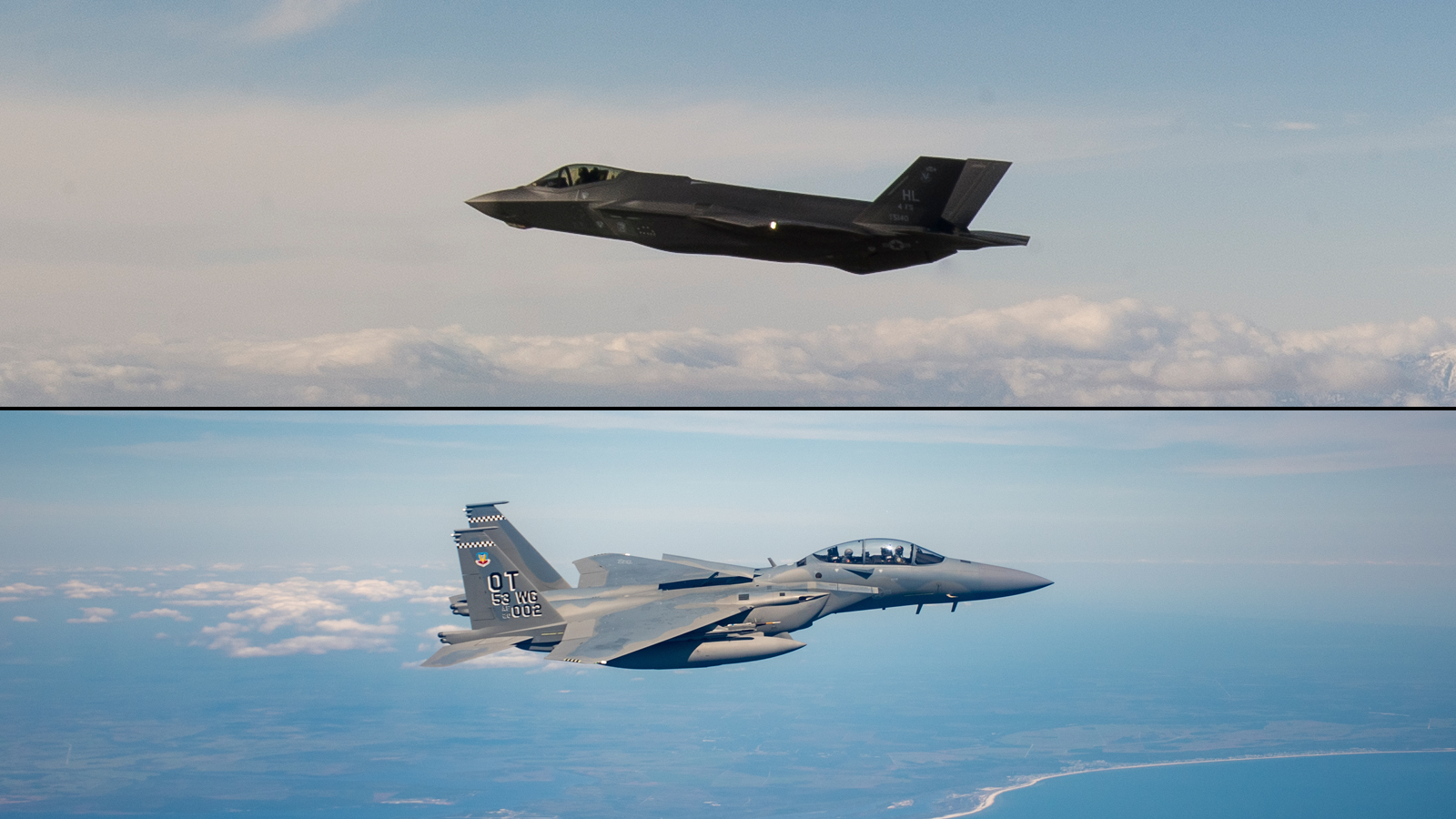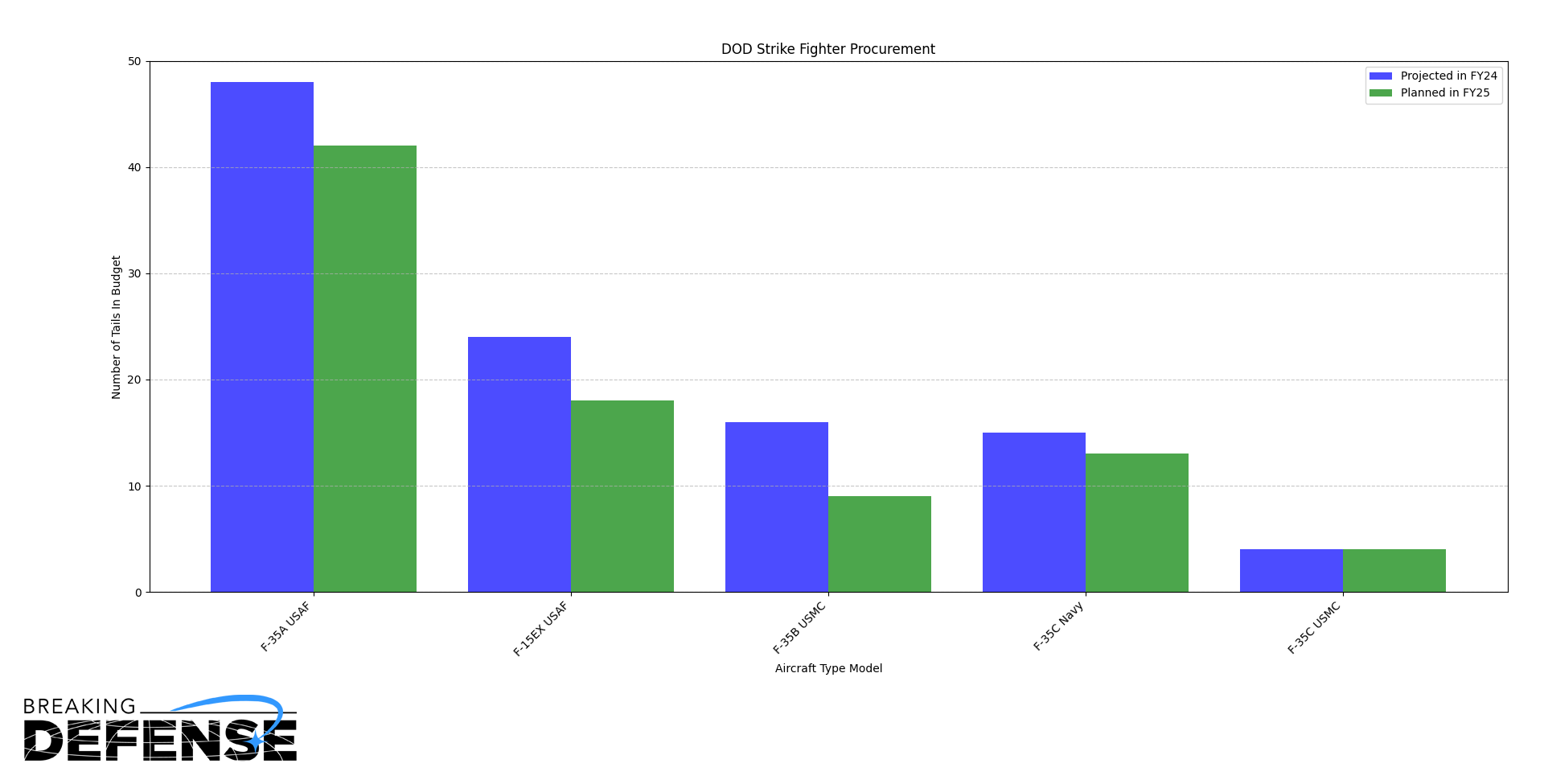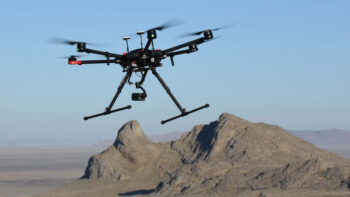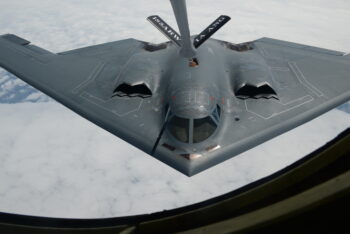
An F-35A (above) and an F-15EX (below). (Images via DVIDS)
WASHINGTON — The Pentagon plans to buy 21 fewer new fighter jets in fiscal 2025 than previously projected, slashing planned buys of both the Lockheed Martin F-35 and Boeing F-15EX amid constraints imposed by congressionally mandated budget caps.
The Air Force is also cutting in half its planned procurement of the Boeing-made T-7A training aircraft for the coming fiscal year.
In last year’s budget request, the Air Force projected to buy 48 F-35As and 24 F-15EXs in FY25 for a total of 72 jets, whereas the Department of the Navy, which includes the Marine Corps, planned to purchase 35 F-35s — 16 F-35Bs and 4 F-35Cs for the Marines, plus 15 F-35Cs for the Navy.
But budget documents published today indicate the Air Force is requesting to buy six fewer each of the F-35A and F-15EX, while the Navy would also get six fewer F-35Cs and the Marines would cut three F-35Bs. The Marine F-35C buy would hold steady at four.
For more coverage of the FY25 budget release, click here.
In total, instead of buying 107 fighter jets this next fiscal year, the Pentagon will only be buying 86. It means the Air Force specifically falls to 60; Air Force officials have previously stressed that buying 72 new fighters a year was necessary for their service to increase combat power while offloading aging jets.

US fighter jet procurement figures from FY24 and FY25. (Justin Katz / Breaking Defense)
In a Friday briefing with reporters ahead of the release of the service’s FY25 budget request, Air Force Deputy Assistant Secretary for Budget Maj. Gen. Michael Greiner said the proposal would officially mark the end of procurement for the F-15EX at a final total of 98 fighters. (Officials previously planned to end procurement of the jet in FY25.)
The drop in acquisition of the F-35, on the other hand, is being treated as a deferral, as the services respective programs of record are not expected to change. The reduced F-35 buy was previously reported by Reuters.
It’s the second time the Air Force has sought to truncate the buy of the F-15EX, also known as the Eagle II. Early on in the F-15EX program, officials planned to buy 144 of the fighters, later dropping that number to 80 in the FY23 budget request. But in FY24, the service added 24 jets back in for FY25 with the eventual goal of a fleet of 104, which Air Force Lt. Gen. Rick Moore previously told Breaking Defense was made possible by a rising defense topline.
RELATED: Newest F-35, F-15EX contracts are set. Here’s how much they cost. (EXCLUSIVE)
Spending limits imposed by the debt ceiling deal known as the Fiscal Responsibility Act (FRA), which capped the FY24 and FY25 defense toplines at $886 billion and $895 billion, respectively, have now forced the services to pare back plans to bring on new capabilities and replenish aging fighter fleets.
It’s possible that Congress could shift money around differently within the limits of the FRA and force the services to buy more fighters once lawmakers begin to markup defense legislation later this year. Usually, the Pentagon requests extra spending outside its budget request in what’s known as an unfunded priorities list, where fighters have sometimes appeared in years past, though it’s unclear whether the DoD would pursue one given the FRA.
Lawmakers could additionally authorize more spending outside the budget caps with a supplemental appropriation package, such as one requested by the Biden administration last year to fund assistance for Ukraine and Israel and other priorities like building nuclear submarines. The fate of that particular legislation, which does not include funding for any new fighters, remains unclear.
The FY25 budget will further halve plans to buy a new training jet for the Air Force, Boeing’s T-7A that will replace the T-38 Talon. In the five-year spending horizon known as the Future Years Defense Program outlined by the FY24 budget request, the Air Force planned to buy 14 of the trainers in its low rate initial production phase, which slipped from FY24 to FY25 due to developmental issues. Now, the service will seek $233 million to buy only seven of the jets in FY25.
Later on in the T-7A program, officials previously told Breaking Defense, the Air Force may want to convert it into an F-7 light armed attack jet.
Justin Katz in Washington contributed to this report.






















